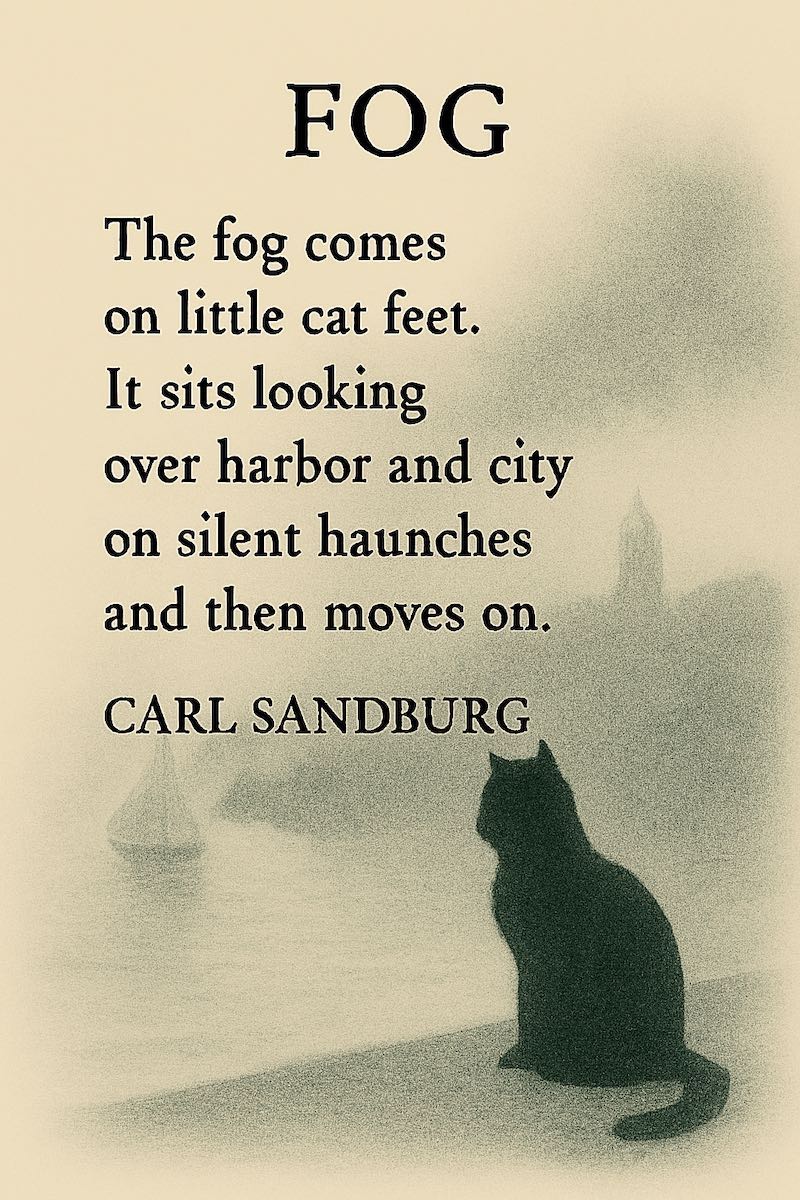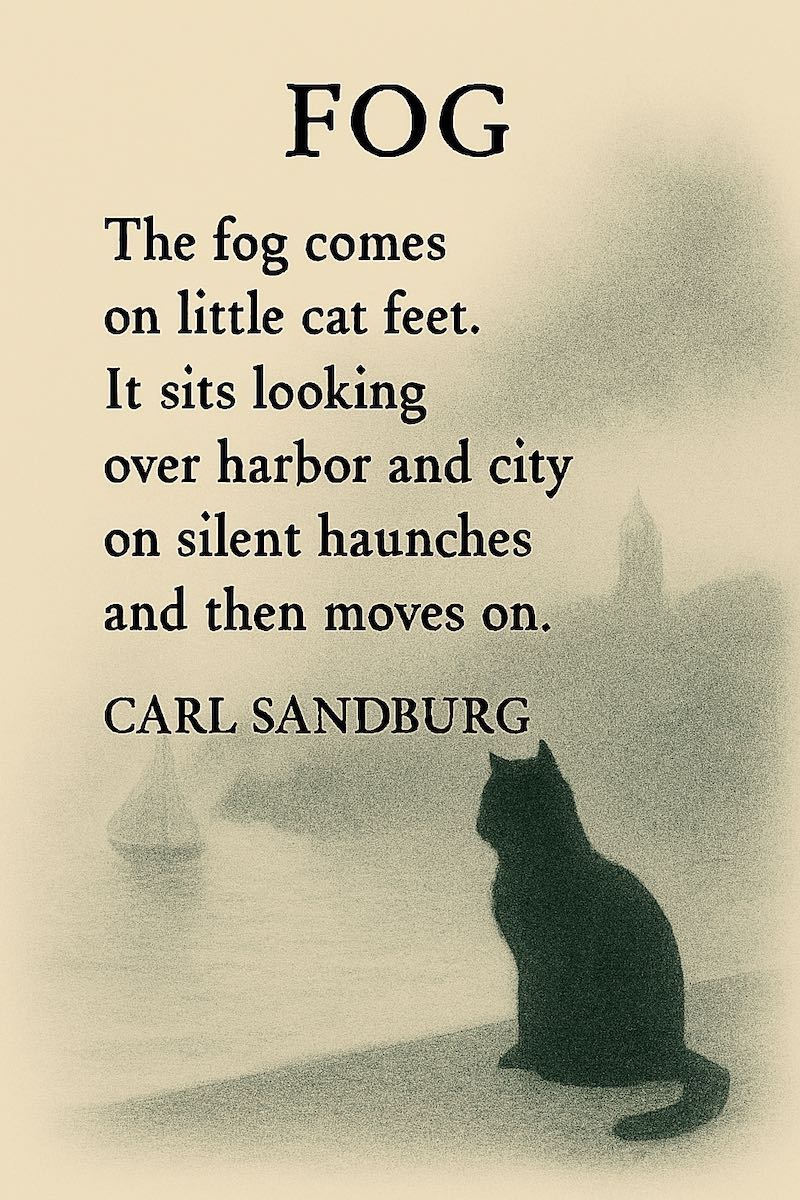So Much Depends: A Brief Look at Carl Sandburg's "Fog"
Carl Sandburg’s “Fog,” published in 1916, is one of the most famous examples of American Imagist poetry. It is a perfect choice for The Concise Verse because it does so much with so little. In just six brief lines, Sandburg paints a vivid, dynamic picture of a quiet natural phenomenon.
The Poem
The fog comes
on little cat feet.
It sits looking
over harbor and city
on silent haunches
and then moves on.
The Insight: Metaphor in Miniature
The genius of this poem lies in its central metaphor: comparing the fog to a silent, stalking cat.
-
"Little cat feet": This single phrase evokes the gentle, almost undetectable way fog drifts in from the sea, settling over a port without warning.
-
"Sits looking": The cat is patient and still, perfectly mirroring the way a thick fog can completely halt activity and hang motionless over a landscape.
-
"Moves on": Just as a cat eventually wanders off, the fog is temporary. It lifts and dissolves as quietly as it arrived.
Sandburg was known for his grounded, accessible poetry, often writing about the everyday scenes of American life. With "Fog," he doesn't use lofty language or complex rhyme schemes; he simply uses one clear image to convey the essence of another, resulting in a poem that is both powerful and profoundly concise.

